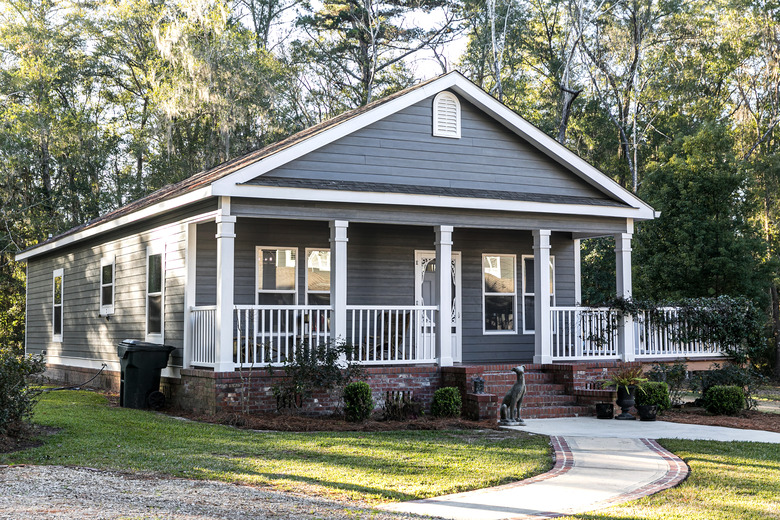How To Replace The Floor Of A Mobile Home
Eventually, you may get that sinking feeling that your mobile home needs a floor change. Really, though, you may actually feel the floor sinking, a signal that there's a soft spot in need of repair. Most older mobile homes consist of subflooring made from particle board, which is extremely absorbent and susceptible to bowing, warping, rot and soft spots. Just the smallest amount of water can cause damage. Newer homes are slightly better equipped. They use stronger particle board or oriented strand board (OSB), both of which are more water resistant. Even so, they're still vulnerable to bowing, softening and warping. Regardless, a soft spot should signal that the time has come for a floor replacement.
Cut the Rug
Cut the Rug
The first step is to remove the trim and floor covering. If you're working with carpet, you'll need to remove the strips. For vinyl, cut around the perimeter of the room. Tile floors will need to be ripped up. With the covering removed, you may be able to better locate a leak. If the leak is the cause of the damage, make sure to repair it so your new floor doesn't get harmed.
Take Up the Subfloor
Take Up the Subfloor
Next, you'll want to cut the subfloor out around the perimeter of the room. Set your circular saw to three-fourths inch or five-eighths inch, depending on the thickness of your floor. Cut the perimeter around the edge of the room, making sure not to damage the joists below. Then, carefully cut the subflooring between joists. Saw between the joists and remove each piece. Make sure there are no pipes or wires in the way. You may need an oscillating tool or knife to get the subflooring out from underneath the walls.
Joist Do It
Joist Do It
Now that the subflooring has been removed, you can inspect the joists for any damage. If a joist is damaged, you can either replace it or reinforce it with a with lumber that has the same dimensions as the joist. Then, add insulation. Remember, the better the insulation, the more you'll save on utilities in the summer and winter seasons. Make sure the insulation is underneath the piping and wires.
Subflooring It
Subflooring It
Lay the subfloor in the same direction as the original in the perpendicular direction of the joists. Cut the plywood to the proper size to fit the width of the room. You may need to nail and glue an additional two-by-four so you have a ledge to lay the new subfloor down. At each seam, where a piece of plywood ends and another begins, reinforce with a two-by-four between the joists. Make sure the floor is level.
Covering Ground
Covering Ground
Here's the fun part. There are a number of options and styles for covering your floor, including carpet, vinyl, tile and hardwood. Vinyl or tile is best for bathrooms to keep water damage to a minimum.
